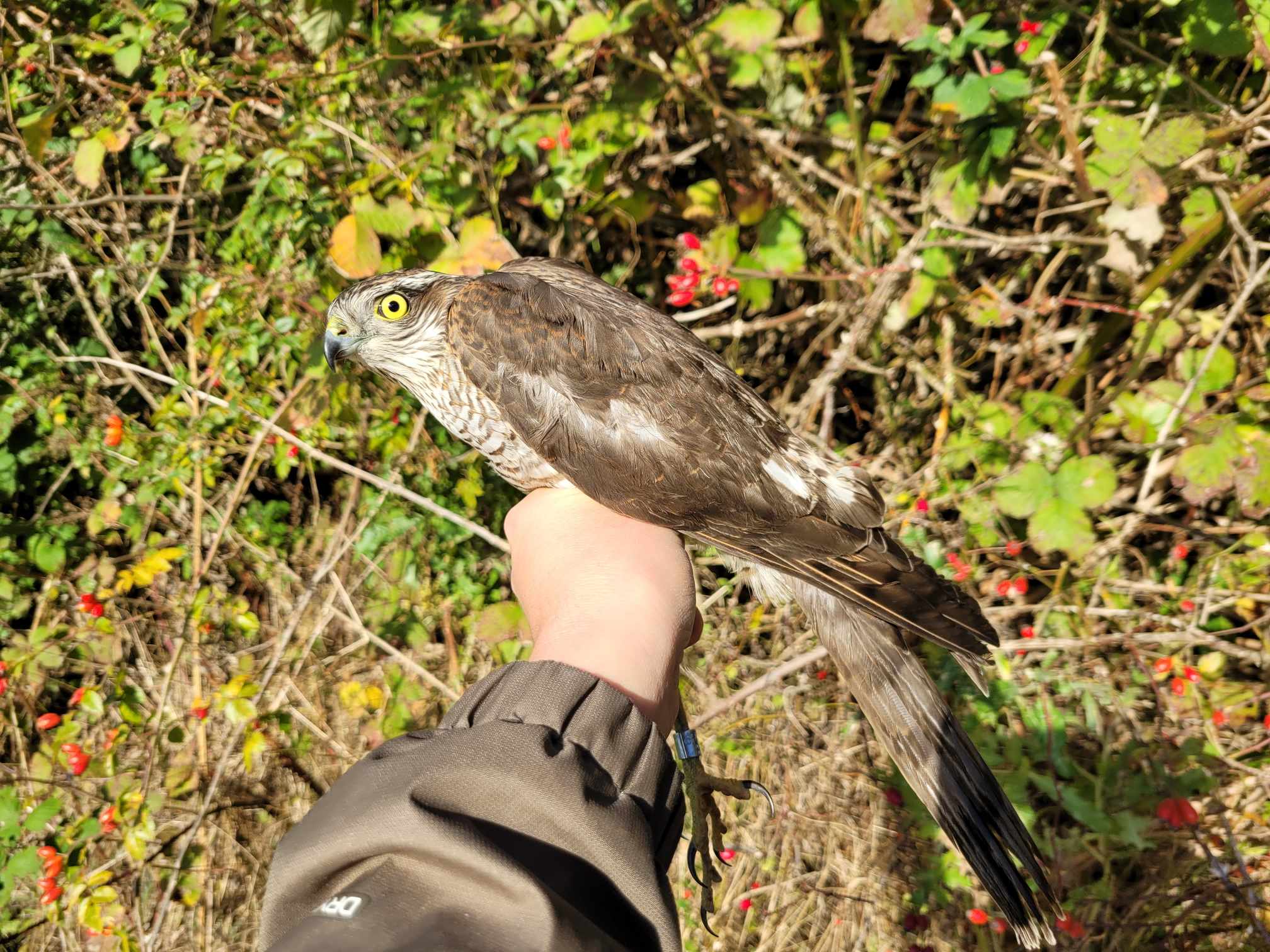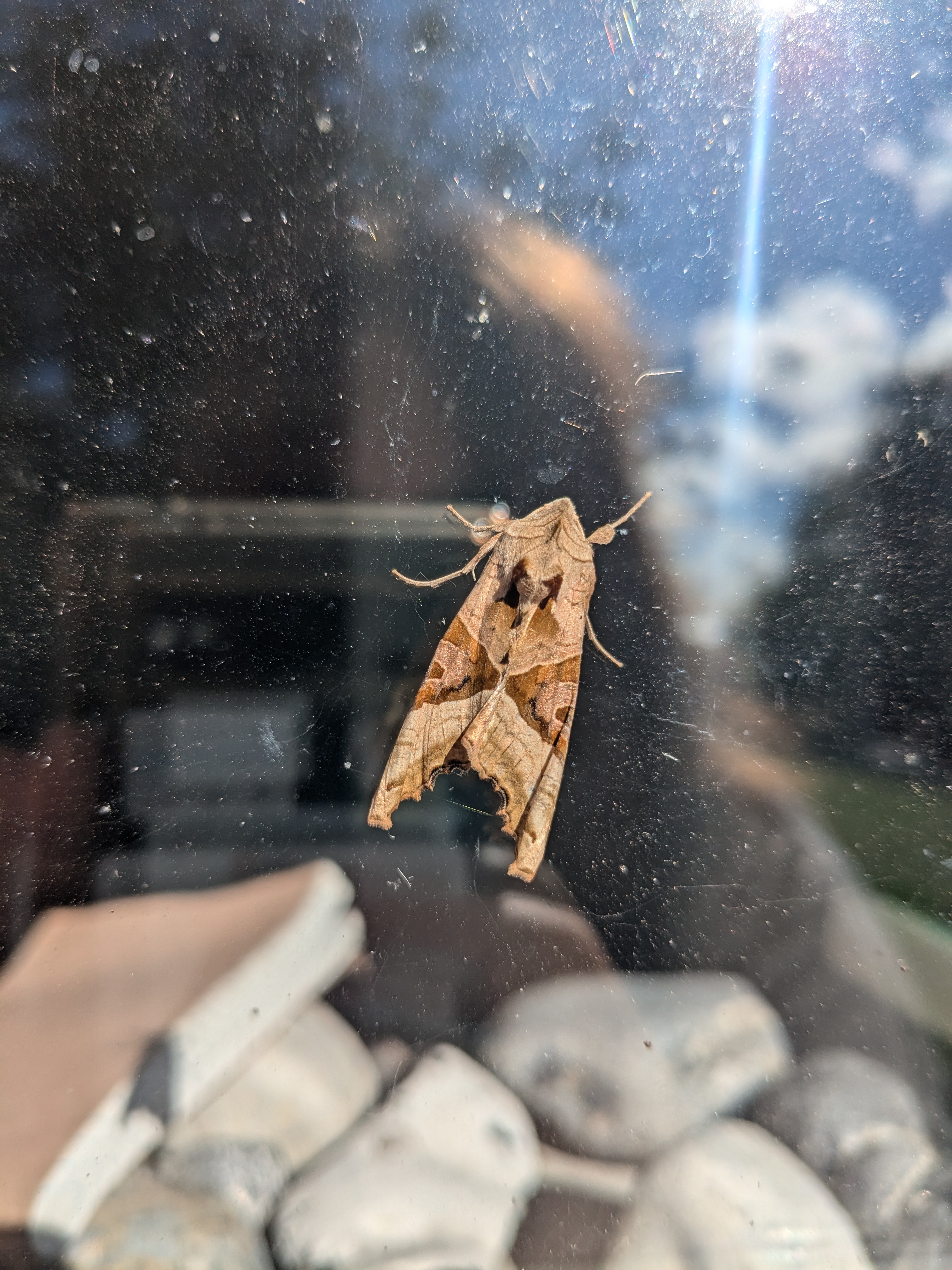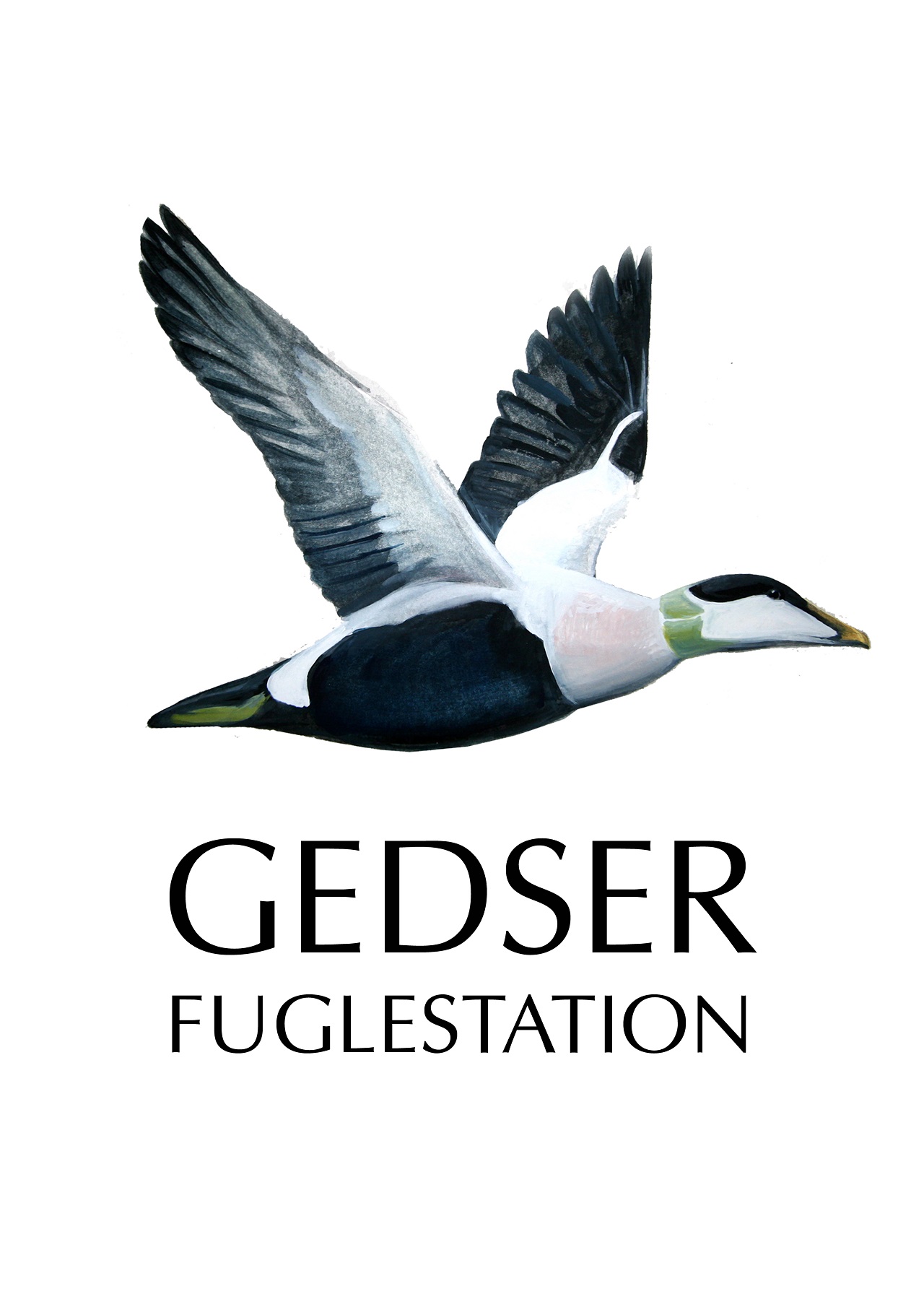Gedser Fuglestation Blog
Her på Gedser Fuglestations blog bringes korte nyheder i dagbogsformat om hændelser på fuglestationen.
Birds and birds, and birds and birds
Ringmærkningen: October ringing continues at a steady pace. Officially, I held my first recapture Blåmejse/Blue Tit (Cyanistes caeruleus) today and, boy, do they give quite a strong pinch with their beak! Nevertheless, a very pretty bird. In the Blue Tit’s company, a Træløber/Treecreeper (Certhia familiaris) and a Spurvehøg/Sparrowhawk (Accipiter nisus), and were both caught and ringed today, to then be released into the golden Autumn sunshine.
Additionally we had a a Stor flagspætte/Great Spotted Woodpecker (Picoides major). This individual was quite loud as we removed it from the mist net, but then sat very well (and peacefully) in-hand. The first Stor flagspætte was ringed in Denmark in 1917 (according to The Danish Bird Migration Atlas).
I have not put any moth traps out, but I did spot a beautiful Angle Shades (Phlogophora meticulosa) moth basking in the sunlight, on the window. The caterpillars of this moth like to feed on Common Nettle (Urtica dioica), of which we have an abundance of around the station.
We will see what tomorrow brings, and who flies into our nets.
 Stor flagspætte 1K Han (foto: Larissa Britton)
Stor flagspætte 1K Han (foto: Larissa Britton)
 Spurvehøg (foto: Freya Mørup-Petersen)
Spurvehøg (foto: Freya Mørup-Petersen)
 Phlogophora meticulosa (foto: Larissa Britton)
Phlogophora meticulosa (foto: Larissa Britton)

by Lara W
One of the most wonderful things about a prolonged stay at Gedser is witnessing the changes in migration. When I first arrived about a month ago, roughly a thousand birds passed the point during our standard counting time (a period of five hours starting from half an hour before sunrise). Looking back, it was a perfect time to begin learning how to identify and count various species, as numbers were manageable, permitting time for discussion and identification tips to be passed along. In the past couple of weeks, the number of birds passing the point have increased dramatically, and we are now regularly seeing 5000+ birds within the standard time frame. Numbers have actually passed the 10k mark on a few days, and it looks set to continue at an exponential rate. What is fascinating, is that no two days are the same. Some days, passerine species dominate, others, raptors, and some days the seaducks take precedent. For those who have not experienced it, the feeling is like no other; a paradoxical mix of thrilling excitement, and peaceful contentment. Like a feather brushed along the spine.
Today, a total of 8943 individuals representing 33 species were counted migrating, along with several new species for the season spotted foraging around the point. As I stated above, the changes are evident in the numbers: this past week, various geese/gæs and Columbidae species are beginning to dominate, with four different geese spotted today: 900 Dark-bellied Brent goose/ Knortegås (Branta bernicla), 10 Greylag goose/Grågås (Anser anser), 14 Tundra bean goose/Sædgås (Anser fabalis rossicus), and 249 Barnacle/Bramgås (Branta leucopsis). Later this afternoon, three flocks of Barnacles, equalling around 80 birds flew over my head out in the meadow beyond the station within the space of half an hour, so I imagine that small flocks may well have continued passing south throughout the day. 450 Woodpigeon/Ringdue (Columba palumbus) and 28 Stock Dove/Huldue (Columba oenas), also passed over, their gigantic flocks reminiscent of Hitchcock’s The Birds (1963), although thankfully without the malevolent undertones. I was struck, as before on the “Crane/Trane Day”, by the reality of several hundred birds passing by so close. It is not a feeling easily described, and gives one a feeling of connectedness to the natural world not often felt. We are all just trying to find our way, afterall.
The really big numbers came from the Common Eider/Ederfugl (Somateria mollissima), starting from the second I arrived (rather breathless) at the point – 6142 individuals, which again consisted almost exclusively of male birds. These came in flocks ranging in size from 3 to 80, although groups of around 30 were the most common, with the occasional Wigeon/Pibeand (Anas Penelope) or Teal/Krikand (Anas crecca) thrown in for the sake of diversity. Red-breasted Merganser/ Toppet Skallesluger (Mergus serrator) numbers are on the rise, with 99 passing the point today, along with divers of both the red -and black-throated variety flying either solitarily or in pairs (a total of 11 Red-throated Diver/Rødstrubet Lom (Gavia stellata) and 2 Black-throated Diver/Sortstrubet Lom (Gavia arctica)). 3 Red-necked Grebe/Gråstrubet Lappedykker (Podiceps grisegena) also flew by much to our pleasure! Passerines were also present, although only a few actually migrated – including 26 Siskin/Grønsisken (Spinus spinus) and 82 Swallow/Landsvale (Hirundo rustica) – however quite a few others formed flocks around the point but did not seem ready to leave yet, including Greenfinch/Grønirisk (Chloris chloris), and several large groups of Siskin and Chaffinch/Bogfinke (Fringilla coelebs). Perhaps they will depart over the weekend. I refuse to make more than a passing mention of the two Magpie/Husskade (Pica pica) floating around making half-hearted passes at the point.
Three species drew our attention in particular. Two Caspian gull/Kaspisk Måge (Larus cachinnans) were seen amongst a group of gulls foraging, identifiable by their snowy-white heads in contrast to the mottled appearance of the usual Common gull/Stormmåge (Larus canus) and Herring gull/Sølvmåge (Larus argenteus). Three Purple sandpiper/Sortgrå Ryle (Calidris maritima) were witnessed happily feeding along with some sanderlings along the new surge of sand formed south of the point by the recent changes in wind direction. In addition, two Great grey shrike/Stor Tornskade (Lanius excubitor) were seen flitting about the point, and although I did attempt to photograph them, they were altogether too skittish to capture. Hopefully they will appear again tomorrow. Being not a common bird at all in my homeland of the UK, these were lovely birds to see. The long whiskers on either side of the bill, similar to those present on nightjar/natravn (although not nearly so long), betray the birds’ reliance on this sensory organ for prey-catching.
Tomorrow is Euro Birdwatch! We at the station will be hosting visitors coming to observe our ringing and migration counting activities, please do come along to see what we do!
N.B. In relation to Larissa's comment above on Blue tit/Blåmejse: they are the cutest, sassiest birds to ring, and anyone who says otherwise is just plain wrong.
People at the observatory: Vagn Lind, Lara Winsloe, Larissa Britton, Freya Mørup-Petersen, Lars Ulrich Rasmussen, Mads Elley, Ole Friis Larsen


